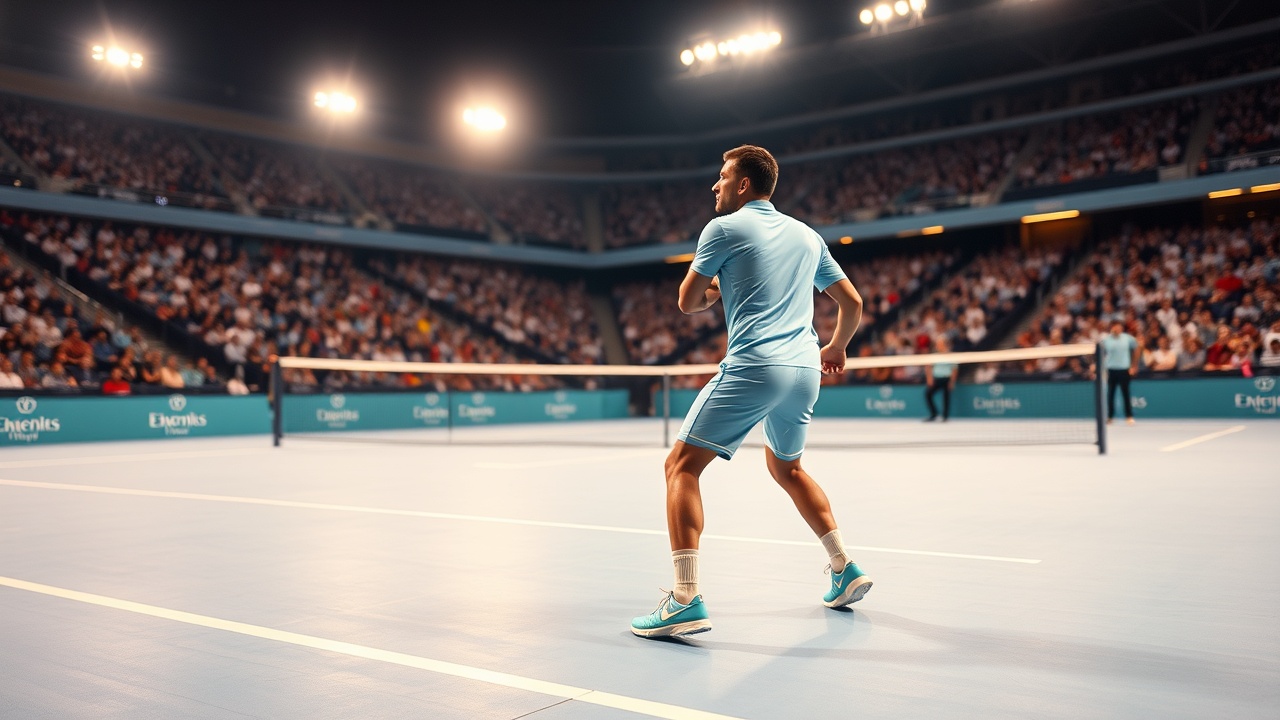Mastering Shot Selection and Court Positioning
Mastering the intricacies of shot selection in tennis is vital for success, but equally significant is a player’s court positioning. Elite competitors, notably the likes of Carlos Alcaraz, possess an uncanny ability to anticipate their opponents’ next moves while effectively creating time to strategize their own shot. At just 22 years old, the Spaniard has emerged as a remarkable force in the sport, recently clinching the French Open and making a stunning transition to grass by winning the Queen’s Club Championships for the second consecutive year. This streak sets him up favorably as he charges toward a potential third consecutive title at Wimbledon, where his agility and strategic dominance will be put to the ultimate test.
Alcaraz’s Prowess and Evolution of Tennis
Alcaraz’s capabilities on the court have been the subject of much admiration, with former British number one John Lloyd hailing his quickness, powerful groundstrokes, and entertaining style.
“He’s truly a showman and a great entertainer,”
Lloyd emphasized to BBC Sport.
To fully comprehend Alcaraz’s prowess, one must reflect on the evolution of tennis itself. Traditionally, players roamed all corners of the court, but the game’s dynamics have shifted, with today’s matchups increasingly resolved from behind the baseline. Lawn maintenance advancements at venues like Wimbledon play a role in this change. Visual comparisons depict a notable shift: the grass courts of the 1970s and 1980s showed significant wear across various areas, while recent years present a more consistent surface. Correspondingly, statistics reveal a striking decline in serve-and-volley tactics; for instance, while 32.6% of points in the men’s draw in 2002 stemmed from this style, it plummeted to a mere 6.93% by 2018. This trend aligns closely with advancements in racquet technology, which have facilitated more potent baseline play.
Alcaraz’s Dominance on Grass Courts
Alcaraz has demonstrated exceptional skill with both baseline play and net approaches, as indicated during last year’s Wimbledon final against Novak Djokovic, a 24-time Grand Slam champion. Alcaraz’s swift movement dictated the match tempo, causing Djokovic to second-guess his strategies and rush towards the net, where he found less success, winning only 50.9% of his net points compared to Alcaraz’s 72.7%. Overall, Alcaraz created 14 break points, turning five into opportunities, while Djokovic contended with only three break points. This relentless pressure affirmed Alcaraz’s prowess; he fired off 21 forehand winners while Djokovic managed just six and matched him with 10 backhand winners compared to Djokovic’s three.
His recent triumph at Queen’s reflects Alcaraz’s established dominance on grass courts—an impressive feat, as he has already matched Rafael Nadal’s career total of four grass court titles at just 22. Nadal was often heralded as the ‘King of Clay’, but Alcaraz’s versatility across surfaces is starting to make its mark in tennis lore. Andrew Castle, another former British number one, remarked on the heightened expectations that follow Alcaraz, noting his extraordinary performances week after week.
Anticipating Opponents and Future Challenges
“His movement is extraordinary,”
noted Craig O’Shannessy, a tennis analyst and consultant, who emphasized the rapidity with which Alcaraz recovers following shots. Observing Alcaraz closely left O’Shannessy astonished at his court coverage capabilities, elevating the standards for movement in the sport.
Understanding an opponent’s shot selection and movement is crucial for victory, illustrating why Alcaraz, with his unpredictable playstyle, poses a considerable challenge for his competitors. O’Shannessy shared insights on prepping players for matches, detailing the importance of anticipating an opponent’s tendencies and weaknesses, particularly in the forehand department, where errors commonly occur. The warm-up serves beyond mere practice; it acts as an opportunity for athletes to gauge their opponents’ reactions to varied shot types.
Heading into Wimbledon, Alcaraz is on a remarkable 18-match winning streak and aims for a hat-trick of titles. Rivals, including current world number one Jannik Sinner and the ever-competitive Djokovic, will attempt to bridge the gap, but both know they are up against a formidable contender. Lloyd outlined Alcaraz’s exceptional abilities, noting,
“He is the most comprehensive player in his age bracket I’ve witnessed,”
while Castle supports this sentiment with praise for Alcaraz and Sinner, who are viewed as the promising future of tennis.
For live scores, results, and schedules, follow our tennis updates directly to your device.




